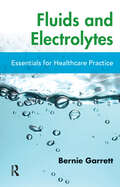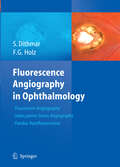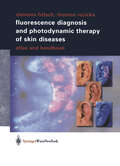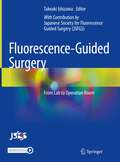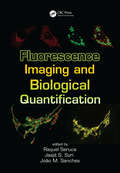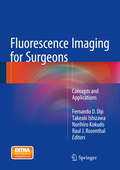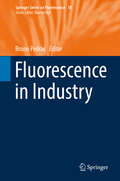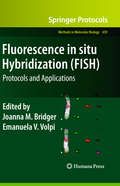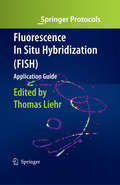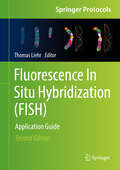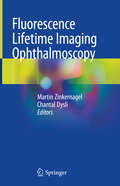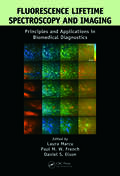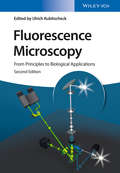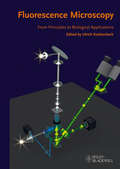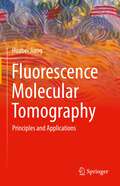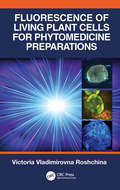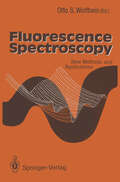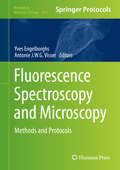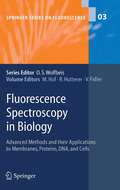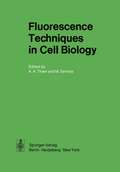- Table View
- List View
Fluids and Electrolytes: Essentials for Healthcare Practice
by Bernard M. GarrettFluids and Electrolytes: Essentials for Healthcare Practice is designed to give a solid understanding of fluid and electrolyte physiology and its implications for practice, including acid-base balance and intravenous (IV) therapy, in a concise and easily understandable format. Chapters incorporate physiological, developmental and practical aspects, highlighting some of the key issues that arise from childhood to old age. This accessible text is presented with clear graphical representations of key processes, numerous tables and contains interesting facts to explore some common myths about human fluid and electrolyte physiology. A valuable resource for healthcare students, this book also provides a strong comprehensive overview for practitioners, nurses, physiotherapists and paramedics.
Fluids and Electrolytes: Essentials for Healthcare Practice
by Bernard M. GarrettFluids and Electrolytes: Essentials for Healthcare Practice is designed to give a solid understanding of fluid and electrolyte physiology and its implications for practice, including acid-base balance and intravenous (IV) therapy, in a concise and easily understandable format. Chapters incorporate physiological, developmental and practical aspects, highlighting some of the key issues that arise from childhood to old age. This accessible text is presented with clear graphical representations of key processes, numerous tables and contains interesting facts to explore some common myths about human fluid and electrolyte physiology. A valuable resource for healthcare students, this book also provides a strong comprehensive overview for practitioners, nurses, physiotherapists and paramedics.
Fluorescence Diagnosis and Photodynamic Therapy of Skin Diseases: Atlas and Handbook
by Clemens Fritsch Thomas RuzickaThis book is the most up-to-date publication on fluorescence diagnostic (FDAP) and photodynamic therapy (PDT) methods used in dermatology. Both techniques are presently world wide introduced as standards for the delineation and the treatment of cutaneous precancerous stages and tumors, which show steadily increasing numbers due to e.g. more frequent sun exposure. Summarizing experiences on more than 5.000 treated patients, it offers a comprehensive information on every aspect of skin tumor detection and treatment. The main part of the book focuses on the clinical aspects giving detailed descriptions on skin tumor detection as well as photodynamic treatment of selected diseases (solar keratoses, basal cell carcinomas, squamous cell carcinomas, Bowen's disease, psoriasis lesions, etc.). The clinically oriented chapters are supplemented by practical guidelines for PDT and FDAP. The included atlas is comprised of 270 high quality color figures allowing daily use as a handbook.
Fluorescence-Guided Surgery: From Lab to Operation Room
by JsfgsThis volume is a practical guide of theranostics using intraoperative fluorescence imaging technology, as an all-out effort by the Japanese Society for Fluorescence Guided Surgery. It describes the various approaches the technique is being used such as vascular imaging, identification of lymphatic vessels by intratissue injection, lymph node imaging, and imaging for identification of anatomical structures. The book is organized into three major parts and the first one delivers the basics, introducing the use of the technology in clinical settings and initial setups. Next comes the description of clinical applications where chapters illustrate perfusion assessment, cancer localization, anatomy visualization, and lymph nodes/ducts mapping. Each chapter is devoted to the specific surgical field and disease areas, presenting images and videos of case studies. The last part presents some upcoming techniques for treatments. The Editor and the authors wish the ideas presented here will be hints to bridge the knowledge between surgeons and basic researchers for further innovation and practicality. It is important to stay up-to-date since intraoperative fluorescence imaging has been applied to clinical settings in various surgical fields and at the same time, novel techniques improving the efficacy of the technology have also been developed actively. Fluorescence-Guided Surgery – From Lab to Operation Room is recommended for surgeons, operating nurses, medical experts, basic researchers and, industry engineers worldwide beyond boundaries of specialties. Edited and written by experts of The Japanese Society for Fluorescence-Guided Surgery, those who are the founders of the technology, it describes the accurate development history and cutting-edge techniques based on the knowledge accumulated over the years.
Fluorescence Imaging and Biological Quantification
by Jasjit S. Suri Raquel Seruca J. Miquel SanchesThis comprehensive reference work details the latest developments in fluorescence imaging and related biological quantification. It explores the most recent techniques in this imaging technology through the utilization and incorporation of quantification analysis which makes this book unique. It also covers super resolution microscopy with the introduction of 3D imaging and high resolution fluorescence. Many of the chapter authors are world class experts in this medical imaging technology.
Fluorescence Imaging and Biological Quantification
by Jasjit S. Suri Raquel Seruca João M. SanchesThis comprehensive reference work details the latest developments in fluorescence imaging and related biological quantification. It explores the most recent techniques in this imaging technology through the utilization and incorporation of quantification analysis which makes this book unique. It also covers super resolution microscopy with the introduction of 3D imaging and high resolution fluorescence. Many of the chapter authors are world class experts in this medical imaging technology.
Fluorescence Imaging for Surgeons: Concepts and Applications
by Fernando D. Dip Takeaki Ishizawa Norihiro Kokudo Raul J. RosenthalThis text presents the experiences of leading researchers and surgeons with different fluorescence methods. Chapters range from basic science of fluorescence to current clinical applications and new horizons. The first few chapters describe the historical evolution and physical principles of fluorescence and provide the foundation for the reader to understand the current scope and limits of its use in surgery. The second section focuses on the clinical applications of intraoperative fluorescence imaging including subsections on fluorescence cholangiography, applications to hepatectomy, lymph node navigation, applications to GI tract and pelvic surgery and identification of cancer tissues. The third section focuses on new frontiers including fluorescence probes, imaging systems and applications to photodynamic therapy. Authored by leaders in the development of fluorescent methods worldwide, Fluorescence Imaging for Surgeons: Concepts and Applications will have an impact on numerous medical specialists including general surgeons, colorectal and minimally-invasive surgeons and surgical oncologists. Researchers will find the book to be an invaluable resource on the latest advances in the utilization of nanoparticles and fluorescent probes.
Fluorescence in Industry (Springer Series on Fluorescence #18)
by Bruno PedrasThis book gathers 12 outstanding contributions that reflect state-of-the-art industrial applications of fluorescence, ranging from the pharmaceutical and cosmetics industries to explosives detection, aeronautics, instrumentation development, lighting, photovoltaics, water treatment and much more. In the field of fluorescence, the translation of research into important applications has expanded significantly over the past few decades. The 18th volume in the Springer Series on Fluorescence fills an important gap by focusing on selected industrial applications of fluorescence, described in contributions by both industry-based researchers and academics engaged in collaborations with industrial partners.
Fluorescence in situ Hybridization: Protocols and Applications (Methods in Molecular Biology #659)
by Joanna M. Bridger and Emanuela V. VolpiFluorescence in situ Hybridization (FISH) belongs to that special category of well-established molecular biology techniques that, since their inception a few decades ago, have succeeded in keeping a prominent position within the constantly expanding list of laboratory pro- dures for biomedical research and clinical diagnostics. The design simplicity and cost-effectiveness of the early FISH protocols, combined with the signifcant acceleration of discoveries in related technical areas such as fuor- cence microscopy, digital imaging, and nucleic acid technology have prompted the div- sifcation of the original technique into an outstanding number of imaginative and useful applications, and thus have not only held back its outmoding but have also promoted its expansion into different areas of basic and applied research in the post-genomic era. The 34 chapters included in this book aim at portraying the vibrant complexity and diversity of the current FISH protocol landscape, providing cutting-edge examples of va- ous applications for genetic and developmental research, cancer research, reproductive medicine, diagnostic and prognostic purposes, microbial ecology, and evolutionary st- ies. The book is divided in four parts: (I) Core Techniques, (II) Technical Advancements and Novel Adaptations, (III) Translational FISH: Applications for Human Genetics and Medicine, and (IV) Protocols for Model Organisms.
Fluorescence In Situ Hybridization: Application Guide (Springer Protocols Handbooks Ser.)
by Thomas LiehrThis book is a unique source of information on the present state of the exciting field of molecular cytogenetics and how it can be applied in research and diagnostics. The basic techniques of fluorescence in situ hybridization and primed in situ hybridization (PRINS) are outlined, the multiple approaches and probe sets that are now available for these techniques are described, and applications of them are presented in 36 chapters by authors from ten different countries around the world. The book not only provides the reader with basic and background knowledge on the topic, but also gives detailed protocols that show how molecular cytogenetics is currently performed by specialists in this field. The FISH Application Guide initially provides an overview of the (historical) development of molecular cytogenetics, its basic procedures, the equipment required, and probe generation. The book then describes tips and tricks for making different tissues available for molecular cytogenetic studies. These are followed by chapters on various multicolor FISH probe sets, their availability, and their pot- tial for use in combination with other approaches. The possible applications that are shown encompass the characterization of marker chromosomes, cryptic cytogenetic aberrations and epigenetic changes in humans by interphase and metaphase cyto- netics, studies of nuclear architecture, as well as the application of molecular cytogenetics to zoology, botany and microbiology.
Fluorescence In Situ Hybridization: Application Guide (Springer Protocols Handbooks)
by Thomas LiehrThis manual offers detailed protocols for fluorescence in situ hybridization (FISH) and comparative genomic hybridization approaches, which have been successfully used to study various aspects of genomic behavior and alterations. Methods using different probe and cell types, tissues and organisms, such as mammalians, fish, amphibians (including lampbrush-chromosomes), insects, plants and microorganisms are described in 57 chapters. In addition to multicolor FISH procedures and special applications such as the characterization of marker chromosomes, breakpoints, cryptic aberrations, nuclear architectures and epigenetic changes, as well as comparative genomic hybridization studies, this 2nd edition describes how FISH can be combined with other techniques. The latter include immunostaining, electron microscopy, single cell electrophoresis and microdissection. This well-received application guide provides essential protocols for beginning FISHers and FISH experts alike working in the fields of human genetics, microbiology, animal and plant sciences.
Fluorescence Lifetime Imaging Ophthalmoscopy
by Martin Zinkernagel Chantal DysliThis book focuses on the emerging non-invasive imaging technique of Fluorescence Lifetime Imaging Ophthalmoscopy (FLIO). FLIO reveals unique information on retinal diseases, ranging from age-related macular degeneration and vascular diseases to hereditary retinal dystrophies. Fluorescence lifetimes enable the evaluation of disease progression before irreversible structural changes occur. The image acquisition is suitable for diagnostic purposes and follow-up examinations to investigate the natural course of disease, and to monitor the effects of possible therapies. This book fills the gap between available literature and gives state-of-the-art guidance on the principles of the FLIO technique, image acquisition, and data analysis. Written by a team of expert leaders within this field, this book will be relevant for scientists and clinicians with an interest in ophthalmoscopy.
Fluorescence Lifetime Spectroscopy and Imaging: Principles and Applications in Biomedical Diagnostics
by Laura Marcu Paul M. W. French Daniel S. ElsonDuring the past two decades, there has been an increasing appreciation of the significant value that lifetime-based techniques can add to biomedical studies and applications of fluorescence. Bringing together perspectives of different research communities, Fluorescence Lifetime Spectroscopy and Imaging: Principles and Applications in Biomedical Dia
Fluorescence Microscopy: From Principles to Biological Applications
by Ulrich KubitscheckWhile there are many publications on the topic written by experts for experts, this text is specifically designed to allow advanced students and researchers with no background in physics to comprehend novel fluorescence microscopy techniques. This second edition features new chapters and a subsequent focus on super-resolution and single-molecule microscopy as well as an expanded introduction. Each chapter is written by a renowned expert in the field, and has been thoroughly revised to reflect the developments in recent years.
Fluorescence Microscopy: From Principles to Biological Applications
by Ulrich KubitscheckWhile there are many publications on the topic written by experts for experts, this text is specifically designed to allow advanced students and researchers with no background in physics to comprehend novel fluorescence microscopy techniques. This second edition features new chapters and a subsequent focus on super-resolution and single-molecule microscopy as well as an expanded introduction. Each chapter is written by a renowned expert in the field, and has been thoroughly revised to reflect the developments in recent years.
Fluorescence Microscopy: From Principles to Biological Applications
by Ulrich KubitscheckA comprehensive introduction to advanced fluorescence microscopy methods and their applications. This is the first title on the topic designed specifically to allow students and researchers with little background in physics to understand both microscopy basics and novel light microscopy techniques. The book is written by renowned experts and pioneers in the field with a rather intuitive than formal approach. It always keeps the nonexpert reader in mind, making even unavoidable complex theoretical concepts readily accessible. All commonly used methods are covered. A companion website with additional references, examples and video material makes this a valuable teaching resource: http://www.wiley-vch.de/home/fluorescence_microscopy/
Fluorescence Microscopy: From Principles to Biological Applications
by Ulrich KubitscheckA comprehensive introduction to advanced fluorescence microscopy methods and their applications. This is the first title on the topic designed specifically to allow students and researchers with little background in physics to understand both microscopy basics and novel light microscopy techniques. The book is written by renowned experts and pioneers in the field with a rather intuitive than formal approach. It always keeps the nonexpert reader in mind, making even unavoidable complex theoretical concepts readily accessible. All commonly used methods are covered. A companion website with additional references, examples and video material makes this a valuable teaching resource: http://www.wiley-vch.de/home/fluorescence_microscopy/
Fluorescence Molecular Tomography: Principles and Applications
by Huabei JiangFluorescence Molecular Tomography: Principles and Applications is the first book to cover the underlying principles and practical applications of fluorescence molecular tomography (FMT) in a systematic manner. Using a tutorial approach, the text begins with an overview of the fundamentals of FMT and goes on to detail image reconstruction approaches (including linear and nonlinear reconstruction algorithms), FMT instrumentations (including time-domain, frequency-domain, and continuous-wave domain systems), and implementation of image-enhancing schemes (including both software and hardware approaches). Further chapters examine multimodal approaches combining photoacoustic tomography (PAT), computed tomography (CT), single-photon emission tomography (SPECT), and magnetic resonance imaging (MRI) and discuss bioluminescence tomography and miniaturized FMT from hand-held to endoscopic FMT. A final chapter looks at clinical applications and animal studies. This authoritative and practical guide will serve as a valuable reference for researchers, scientists, clinicians, and industry professionals.The first book dedicated to fluorescence molecular tomography (FMT); Covers underlying principles and practical applications; Written by a leading FMT research pioneer and expert.
Fluorescence of Living Plant Cells for Phytomedicine Preparations
by Victoria Vladimirovna RoshchinaFluorescence of Living Plant Cells for Phytomedicine Preparations reveals how valuable medicinal compounds can be identified through the application of vital fluorescence in plant cells. The book explains the roles that fluorescent compounds play in plant physiology and promotes our knowledge of plant secretory cells and phytopreparations. Supported by vivid illustrations, the book reveals how actinic light – light that induces fluorescence in leaves and flowers – can be used in the identification of secretory cells within plant tissue that may be the repository of valuable medicinal compounds. The book demonstrates the potential of fluorescence in pharmacological analysis with detailed methods for applying fluorescence to identify these deposits of natural drugs. As such, this groundbreaking book contains methods of express-pharmaceutical analysis that could open new horizons in pharmacy and the cultivation of medicinal plants. Features Describes various fluorescence microscopy techniques for the localization of compounds contained in plants with pharmaceutical interest Provides an analysis of pharmaceutical material based on autofluorescence and histochemical reactions for numerous medicinal plant species Demonstrates practices for providing optimal growing conditions and improving the quality of the compounds Showing the readiness of plant raw material for pharmaceutical industry, this book will appeal to professionals in the pharmaceutical industry and students and researchers in the fields of phytochemistry, botany and pharmaceutical sciences.
Fluorescence of Living Plant Cells for Phytomedicine Preparations
by Victoria Vladimirovna RoshchinaFluorescence of Living Plant Cells for Phytomedicine Preparations reveals how valuable medicinal compounds can be identified through the application of vital fluorescence in plant cells. The book explains the roles that fluorescent compounds play in plant physiology and promotes our knowledge of plant secretory cells and phytopreparations. Supported by vivid illustrations, the book reveals how actinic light – light that induces fluorescence in leaves and flowers – can be used in the identification of secretory cells within plant tissue that may be the repository of valuable medicinal compounds. The book demonstrates the potential of fluorescence in pharmacological analysis with detailed methods for applying fluorescence to identify these deposits of natural drugs. As such, this groundbreaking book contains methods of express-pharmaceutical analysis that could open new horizons in pharmacy and the cultivation of medicinal plants. Features Describes various fluorescence microscopy techniques for the localization of compounds contained in plants with pharmaceutical interest Provides an analysis of pharmaceutical material based on autofluorescence and histochemical reactions for numerous medicinal plant species Demonstrates practices for providing optimal growing conditions and improving the quality of the compounds Showing the readiness of plant raw material for pharmaceutical industry, this book will appeal to professionals in the pharmaceutical industry and students and researchers in the fields of phytochemistry, botany and pharmaceutical sciences.
Fluorescence Spectroscopy and Microscopy: Methods and Protocols (Methods in Molecular Biology #1076)
by Yves Engelborghs and Antonie J.W.G. VisserReflecting the expanding field’s need for reliable protocols, Fluorescence Spectroscopy and Microscopy: Methods and Protocols offers techniques from a worldwide team of experts on this versatile and vital subject. The topics covered fall into four broad categories: steady-state fluorescence spectroscopy, time-resolved fluorescence spectroscopy, fluorescent probe development, and the various sub-categories of fluorescence microscopy, such as fluorescence recovery after photobleaching (FRAP), live cell FRET imaging (FRETim), fluorescence lifetime imaging (FLIM), fluorescence fluctuation spectroscopy (FFS), and single-molecule fluorescence spectroscopy (smFS). Written as a part of the popular Methods in Molecular Biology series, chapters include the kind of unambiguous detail and key implementation advice that proves essential for successful results. Comprehensive and practical, Fluorescence Spectroscopy and Microscopy: Methods and Protocols aims to guide both ‘novice’ and established scientists toward furthering their research with these invaluable techniques.
Fluorescence Spectroscopy in Biology: Advanced Methods and their Applications to Membranes, Proteins, DNA, and Cells (Springer Series on Fluorescence #3)
by Martin Hof Rudolf Hutterer V. FidlerFluorescence Techniques in Cell Biology
by Andreas A. Thaer Manfred Sernetz.For there to be progress in science, there must first be communication between experts of different disciplines. This is particularly true of modern biology which is becoming more and more of an interdisciplinary field. The present situation in cell biology clearly reflects this devel opment and demonstrates that the application of physical techniques was necessary before this field of biological research could be developed on an objective and quantitative basis. The utilization of optical phenomena as measuring parameters at the microscopic level has provided the basis for the development of quantitative cytochemistry. This rapidly growing extension of conventional cytochemistry and histochemistry is based on the visual oberservation of qualitative chemical criteria in correlation with the microscopically resolved structure of cells and tissues. Furthermore, the introduction into cytochemistry of such optical measuring techniques as ab sorption photometry, interferometry, and fluorometry, as well as the measurement of optical anisotropy, diffrac:tion and scattered light, has provided the methodological bridge for the ex change of knowledge between cell biology on the one hand and biochemistry, or molecular biology, on the other.
